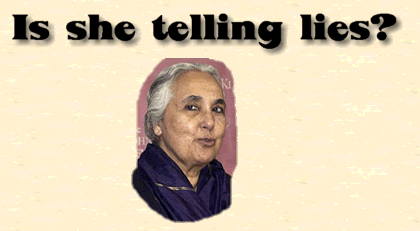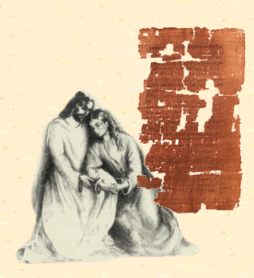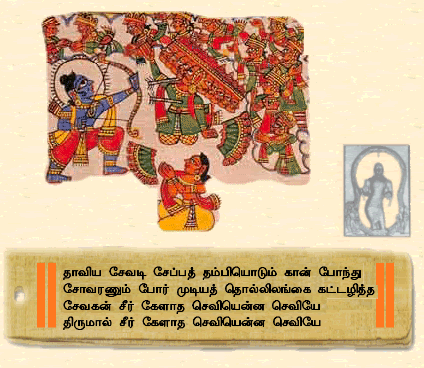




Coming back to the claims on the historicity of Ramayana, most historians who have no ideological vested interests accept the historical kernel of Ramayana. They may differ and debate on the details. Thus Dr.B.B.Lal the eminent archaeologist who excavated the Ramayana sites concludes that Ramayana is not a figment of imagination but based on historical events which were popular in the memory of the people which Valmiki composed into an epic narrative. Dr.B.B.Lal dates Ramayana events to 700 BCE. The unfortunate tendency of certain historians who put ideological vested interests over objective scholarship resulting in suppressing the conclusions arrived at by Dr.B.B.Lal after the Ramayana project, being presented in the ICHR meeting of 1988 has been explained by the eminent archaeologist in the very pages of ‘The Hindu’ itself (‘Facts of history cannot be altered’, July 1 1988).

That Ramayana in its general outline known today, was also known to people of India even prior to Sage Valmiki, is well attested by varied literary evidence from across the nation. particularly from the South. Like for example from ancient Tamil Sangham literature which mentions an event related to Rama that goes unmentioned in Valmiki wherein Sri Rama plans the military strategy under a banyan tree in Rameshwaram and the birds whose sounds disturb the meeting fall silent as Sri Rama commands them to be quiet (Aham: 70:15).
The mention of Rama here makes it clear that the lore of Sri Rama coming to the south and winning in the battle against the demon of Lanka is not something that originated in the North and later spread over to the South but that was as strong in the south Indian tradition as it was in north India even during the period historians usually attribute to Sage Valmiki Ramayana, that is around 200 BCE.


“The non-mention of southern topics does not, of course, prove anything., as the Jataka-stories were framed only with limited objectives and had no compulsive motive to narrate the whole story but by the third century AD the story had assumed its present features, because, in a Chinese collection of some Jataka stories which were translated by a Sogdiana monk between AD 222 and 280, the episodes of Rama’s exile , the abduction of Sita by Ravana, the duel of the latter with Jatayu, of Sugriva and Vali, the construction of a bridge to Lanka, the ordeal of Sita have been drawn in outline.” (pp 103-104, The Ramayana traditions in Asia, Sahitya Akademi 1989)

Another great Jain monk who hails from the southernmost part of India, Saint Illango in his immortal Tamil epic ‘Chilapathikaram’ (usually dated as 200-300 CE) compares the leaving of his epic hero Kovalan of his hometown to Sri Rama leaving Ayodhya.

Clearly by 200 CE if not before, Sri Rama going to Lanka and killing the demons there and veneration of Sri Rama as the avatar of Vishnu have all become part of the Tamil devotional tradition and day to day culture.

Clearly it is not only ASI which has been playing the ‘suppressio veri suggestio falsi’ game.
That said one cannot but agree with Prof. Thapar when she states that a search for a non-existent man-made structure takes away from the imaginative leap of a fantasy and denies the fascinating layering of folk-lore. While rejecting the literalists, one is at a loss to understand why Prof. Romila Thapar fails to see the cultural dimension of the natural formation that inspired the imaginative leap of not just fantasy but also devotional literature of a nation and the fascinating layering of the same by folk-lore and transforming it into one of the centres of national integration as acknowledged by none other than Mahatma Gandhi in his ‘Hind Swaraj’. In India, the whole national integration has been achieved through immersing the nation in such sacred geographic features associated with epic narrative, mythology, devotional literature and folklore.
With regard to the objection that Ram Sethu should not be destroyed not only for ecological and economic reasons but also because it has a cultural and spiritual dimension in the heritage of India, Prof. Romila Thapar asks rhetorically: “Has the idea become the heritage?” Perhaps our JNU Professor who is also, U.S. Library of Congress appointed first holder of the Kluge Chair, has been answered long back by a half-naked Fakir when he stated in such simple but forceful words thus:

“What do you think could have been the intention of those farseeing ancestors of ours who established Setubandha (Rameshwar) in the South, Jagannath in the East and Hardwar in the North as places of pilgrimage? You will admit they were no fools. They knew that worship of God could have been performed just as well at home. They taught us that those whose hearts were aglow with righteousness had the Ganges in their own homes. But they saw that India was one undivided land so made by nature. They, therefore, argued that it must be one nation. Arguing thus, they established holy places in various parts of India, and fired the people with an idea of nationality in a manner unknown in other parts of the world.” (Hind Swaraj, Chapter 9)




